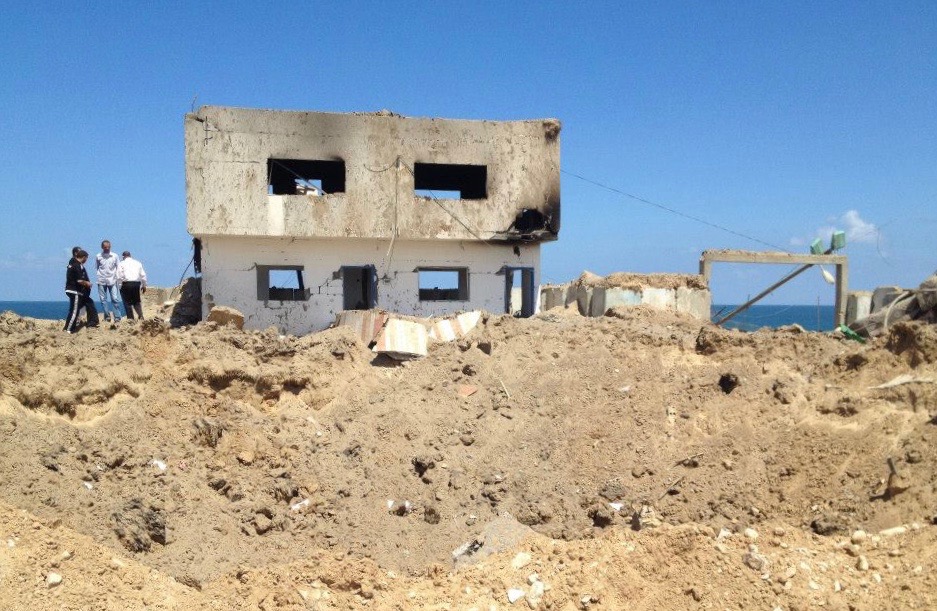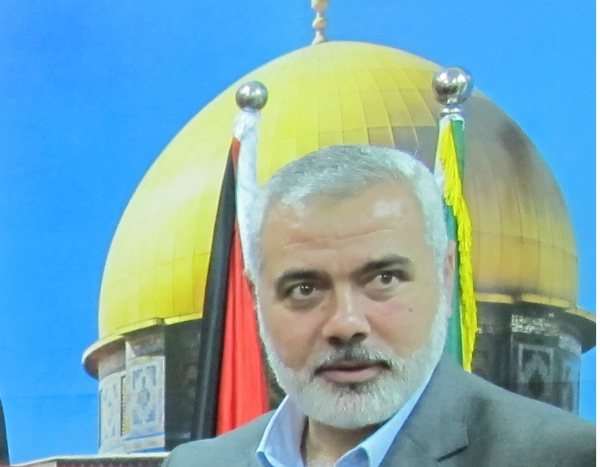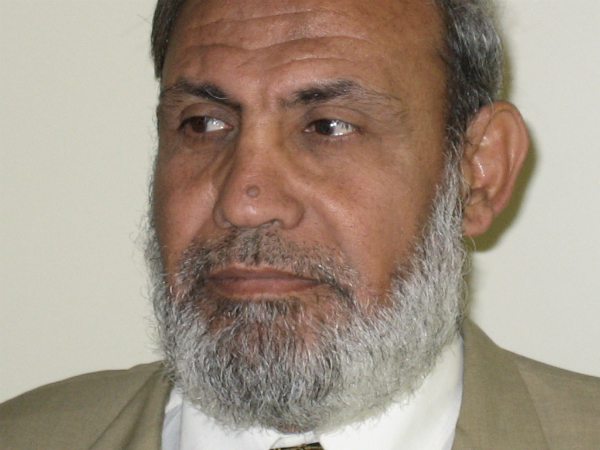
Jihadism and the Killing of an Italian Activist in Gaza
Analysis. Hamas in Gaza not only faces opposition from Fatah, but also from an array of firebrand Salafi-Jihadi groups. This comes as a result of Hamas's changed strategy, from armed struggle to domestic governance. As the Middle East specialist Björn Brenner shows in this article, an excerpt from his newly released book Gaza Under Hamas, militants from both Hamas and Fatah were disappointed with this changed strategy and defected to Salafi-Jihadi groups to continue their struggle. The kidnapping and killing of Italian activist Vittorio Arrigoni is a proof of this.
Publicerad: 2017-03-06
At a critical time for Gaza in 2008, when the isolation was deepening and there was widespread uncertainty over how Hamas would assert its authority, the Italian human rights activist Vittorio Arrigoni arrived in the coastal territory. As it became clear that Arrigoni was a strong supporter of the Palestinian struggle against the Israelis, his presence in the strip was embraced by the Hamas government and used as proof of their legitimacy.
In a public ceremony, Prime Minister Ismail Haniyeh awarded Arrigoni honorary Palestinian citizenship as an ultimate display of gratitude. Also between the people of Gaza and Arrigoni, or ‘Vik’ as they affectionately called him, a special relationship developed. Arrigoni's support in this difficult time was strongly felt among Gazans and is critical to understanding the importance of the dramatic events involving him that ensued a few years later.

Ismael Hanieyh. Photo: Private
In the course of time, Arrigoni became a widely known public figure in Gaza. Huda Elian of the Palestinian Democratic Union (PDU) described him in extravagant terms: ‘Vittorio has been a hero here in Gaza, a hero in defiance of the Israeli occupation. Vittorio’s blood is as precious as any Palestinian blood.’ However, Arrigoni did not evoke the same positive sentiments with all Gazans. His liberal lifestyle was an irritant to those who embraced a more traditional and religious way of life. A non-Muslim, Arrigoni did not follow Islamic customs in terms of dress, smoking, drinking and social relations. To the religiously conservative, Arrigoni led a sinful lifestyle.
Hamas's security forces arrest Jordanian cleric
A few months before the kidnapping of Arrigoni, the Hamas government had detained a leader of the Salafi-Jihadi group Tawhid wal-Jihad, Sheikh Hisham al-Saidani.
Saidani was a Palestinian previously active in Jordan who now led the group Tawhid wal-Jihad from his home in the Nuseirat refugee camp in Gaza. Among Gaza's Salafi-Jihadi groups, Tawhid wal-Jihad was one of the smaller groups but enjoyed particularly high esteem among the Salafi-Jihadis as it was the only group that had so far succeeded in killing an Israeli soldier.
The group was also well respected because Saidani had been publicly endorsed by the Jordanian radical cleric Abu Muhammad al-Maqdisi and was a frequent issuer of harsh fatwas against the Hamas government. Apart from publicly endorsing him, Maqdisi had appointed Saidani to the sharia committee of his website 'Minbar minal-Tawhid wal-Jihad'. The sharia committee was the group of individuals who answered questions from the online community, for instance, on issuing fatwas. Saidani himself was also very critical of the Hamas government.
Seen from the outside, one would think the voice of Saidani and the violent activities of Tawhid wal-Jihad did little harm to the Hamas government. However, the situation was perceived differently from inside the government. The group's attack against an Israeli military jeep killing the driver had come only days after Hamas had managed to get a fragile truce agreement in place after the 2008 –2009 war with Israel.
Added to that, the numerous rockets fired towards Israel by the group and Saidani's increasingly harsher fatwas on the website, it had long ago crossed all the government's red lines. The activities of Tawhid wal-Jihad were usually followed by a statement claiming responsibility and criticising the Hamas government for its leniency towards Israel and for 'deviating from the true path of Islam'. By this, Saidani was challenging Hamas's two defining features - to follow Islam and to conduct resistance – and, hence, was considered to be a serious threat.
Jordanian student travels to Gaza to set cleric free
At the beginning of March 2011, Saidani was arrested and this stirred up a wave of anger within the local Salafi-Jihadi community demanding his release. One of Saidani's followers and a former student of his from Amman was a young Jordanian in his twenties, Hirdani Abdel Rahman al-Breizat. Later that month, Breizat decided to travel to Gaza determined to find a way to set his former teacher free.
Upon his arrival, Breizat met with members of Tawhid wal-Jihad, friends he knew via internet, to discuss how they could achieve Saidani's release. Two of these individuals also held parallel memberships with Hamas's military wing the Qassam Brigades, while one worked as a fire fighter with the Gazan civil defence. Apparently, some of them knew Arrigoni personally, frequenting the same gym in the Tal al-Hawa area in Gaza City. It is interesting to note that, together, this small group's social networks included: the inner core of Hamas's military, the Civil defence forces, the community of internationals and the local Salafi-Jihadi milieu, at the same time.
Following its deliberations, the group decided that the best leverage for getting Saidani freed would be to use a, by then, well-tried method in Gaza – to kidnap a foreigner. The original plan, according to the men's later testimonies in court, was to capture Arrigoni to teach him a lesson, not to kill him, and then to let him go when Hamas had given way to their demand. The operation would not go according to plan, however.
Attempt to pressure Hamas fails and backfires
On 13 April 2011, the group launched its operation. They waited for Arrigoni outside his home and forced him into a waiting car that took them to an empty house in the Mareh Amer area. The day after a video clip was posted on YouTube demanding the release of Saidani. The clip contained critical remarks about the Hamas government's 'un-Islamic' governance and a threat to kill Arrigoni if the government failed to meet the group's 30-hour deadline. It was a staunch provocation to Hamas and a challenge to its authority.
The kidnapping of Arrigoni was bad publicity for Hamas in several regards. It undermined the government's efforts both at restoring order to Gaza and to gain some legitimacy in the international arena. However, according to many newspapers around the world on 14-15 April 2011, the pre-Hamas chaotic security situation was still reigning in Gaza.
On 14 April, the government's security forces managed to locate the house in the Mareh Amer area where Arrigoni was being held. When they entered the house, however, Breizat and his group had fled and the body of Arrigoni was found, tied to a chair and strangled.
Salafis killed Vik – the people of Gaza unite in mourning
The following weekend saw Gaza City's streets filled with ordinary people demonstrating against the killing. Several Hamas leaders and government officials participated in these demonstrations. One of them, Mahmoud Zahar, stated, 'Such a crime is inconsistent with our religion, customs and traditions, and we are determined to bring to justice those who were behind it, whatever their background is.'

Mahmoud Zahar, a strongman within Hamas, condemend the killing of Vittorio Arrigoni. Photo: Bitte Hammargren
The group hid from Hamas in the Nusseirat refugee camp for a few days but was eventually found on 19 April. In an attempt to persuade the kidnappers to surrender, the government brought the imprisoned Saidani to the scene to try to mediate a surrender. Using the leverage of religiously respected men and their fatwas had once again been the method of preference to the government. Apart from bringing Saidani to talk to the kidnappers, the Association of Islamic Scholars in Gaza also issued a fatwa saying Arrigoni's kidnapping was a crime against Islam, referring to verses in the Quran and examples in the life of Prophet Muhammad.
Primarily, the Hamas government, via the Association of Islamic Scholars, was attempting to defeat the group through religious delegitimisation, 'Those who killed Arrigoni are considered outlawed and do not necessarily belong to Islam.' The government made it clear that the kidnapping had no sanction either in Islam or from within Gazan society as such. As was argued by Hamas, 'The act was not only criminal, it was a question of heresy.'
Finally, however, there was a violent end to the stand-off when the kidnappers opened fire from inside the house. When the dust settled, four of them had survived and were eventually prosecuted in Gaza's Majdal Military Court.
Mixing hard and soft measures
The case was designated a military case since three of the four defendants were affiliated with either the civil or military parts of the defence forces. According to Hamas, the military designation of the case also referred to the greater threat to 'homeland security' their actions had constituted.
The four defendants were charged with murder and kidnapping, except for one who was only charged as an accessory. The prosecutor demanded capital punishment for murder and two years imprisonment for accessory to murder. A fifth person also appeared as a suspect in the early stages of the investigation. But when the case was taken to court this individual was only used as a witness. Apparently, he was a close relative to a senior Hamas official and deputy speaker of the Palestinian parliament. During the military court's hearings, all of the defendants claimed they had been tortured while in detention. Commenting on his recorded confession, one of the defendants said, 'it was taken from me by force.'
Eventually, the Majdal Military Court sentenced two of the defendants to life imprisonment, one to ten years imprisonment and one to one year imprisonment for sheltering fugitives. During the court proceedings, the Arrigoni family in Italy had appealed to the Hamas government not to impose capital punishment on the defendants. After having served their terms, the defendants would join the growing stream of Gazan Salafi-Jihadis who travelled to Syria to fight in the civil war.
The Arrigoni case, perhaps more than any other example, showed the extent to which the Hamas government was flexible in its approach how to deal with the Salafi-Jihadi issue. Once again, during the hostage negotiation phase, Hamas had employed mediation techniques and religious delegitimisation as its main tools to resolve the situation, not brute force at first.
Then, upon the culprits' arrests, Hamas did not resort to extra-judicial punishments but tried them in a court of law. While deferring the case to a military court was questionable from a human rights point of view, the use of a formal court and the nature of their sentences was nevertheless a hint of the Hamas government's softer strategy towards the Salafi-Jihadis that would later develop even further.
Violent radicalisation in Gaza beyond Hamas's ideology
Case studies such as the one above also illustrate how a broader spectrum of Salafi-Jihadi groups gradually emerged in Gaza following Hamas’s decision to participate in parliamentary politics. Although these groups were not militarily defiant at the outset, covertly many fighters held double memberships, one in an established faction and another secretly in a Salafi-Jihadi group.
After Hamas had expelled Fatah from Gaza in 2007, Salafi-Jihadi groups grew in number and became increasingly defiant of the new single-faction government. Fatah members who could no longer exercise opposition openly turned to the Salafi-Jihadi groups instead. Mounting hostility towards Hamas within the Salafi-Jihadi groups was largely a result of the increased presence of former Fatah members in their cadres. The Salafi-Jihadi movement in Gaza simply filled the vacuum created by the exiled opposition.
By 2010, a broader and more general trend of radicalisation was becoming apparent among Gaza’s population. Increasing numbers were dissatisfied with Hamas’s governance and this was reflected in further defections from Hamas to the local Salafi and Salafi-Jihadi communities. As an illustration to this, individuals wearing Salafi clothing and long beards were becoming a common sight in Gaza, especially in its southern towns.
A few years earlier, Hamas and the other factions had brought in foreign fighters and instructors to enhance the training of their military forces. After having served with the established factions for a few years, some of these fighters became disillusioned over Hamas’s reluctance to fight Israel and left to join Salafi-Jihadi groups instead. This development further expanded the growth of Salafi-Jihadism, with the continuous leaking of Hamas members swelling its ranks. The kidnapping of Vittorio Arrigoni was proof of this, as well as the fact that foreign fighters were now present in Gaza.